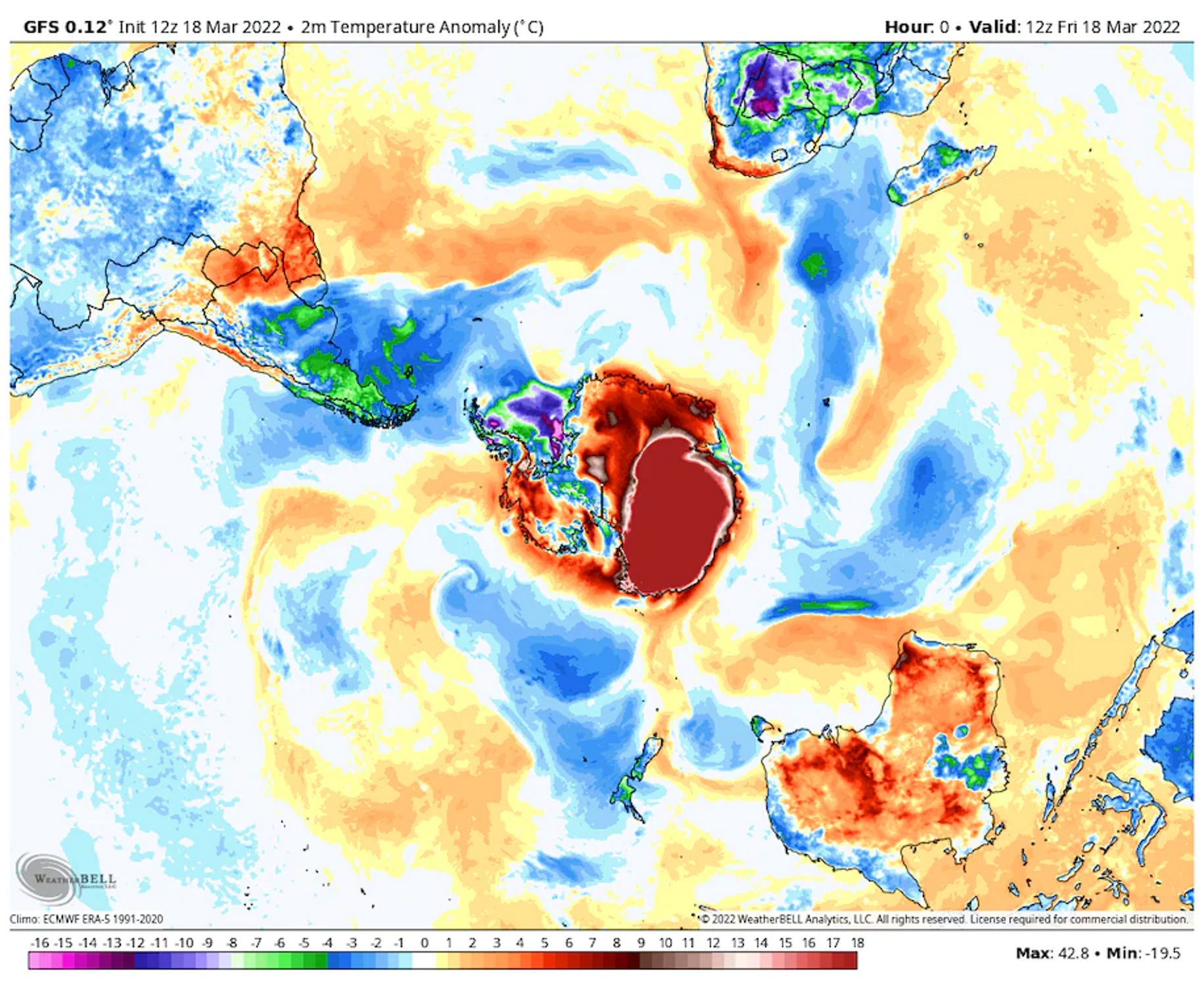It’s 70°F (40°C) warmer than normal in eastern Antarctica – “This event is completely unprecedented and upended our expectations about the Antarctic climate system”

By Jason Samenow and Kasha Patel
18 March 2022
(The Washington Post) – The coldest location on the planet has experienced an episode of warm weather this week unlike any ever observed, with temperatures over the eastern Antarctic ice sheet soaring 50 to 90 degrees above normal. The warmth has smashed records and shocked scientists.
“This event is completely unprecedented and upended our expectations about the Antarctic climate system,” said Jonathan Wille, a researcher studying polar meteorology at Université Grenoble Alpes in France, in an email.
“Antarctic climatology has been rewritten,” tweeted Stefano Di Battista, a researcher who has published studies on Antarctic temperatures. He added that such temperature anomalies would have been considered “impossible” and “unthinkable” before they actually occurred.
Parts of eastern Antarctica have seen temperatures hover 70°F (40 Celsius) above normal for three days and counting, Wille said. Helikened the event to the June heat wave in the Pacific Northwest, which scientists concluded would have been “virtually impossible” without human-caused climate change.

What is considered “warm” over the frozen, barren confines of eastern Antarctica is, of course, relative. Instead of temperatures being -50°F or -60°F (-45 or -51 Celsius), they’ve been closer to 0°F or 10°F (-18 Celsius or -12 Celsius) — but that’s a massive heat wave by Antarctic standards.
The average high temperature in Vostok — at the center of the eastern ice sheet — is around -63°F (-53 Celsius) in March. But on Friday, the temperature leaped to 0°F (-17.7 Celsius), the warmest it’s been there during March since record keeping began 65 years ago. It broke the previous monthlyrecord by a staggering 27 degrees (15 Celsius).
“In about 65 record years in Vostok, between March and October, values above -30°C were never observed,” wrote Di Battista in an email.
Vostok, a Russian meteorological observatory, is about 808 miles from the South Pole and sits 11,444 feet above sea level. It’s famous for holding the lowest temperature ever observed on Earth: -128.6°F (-89.2 Celsius), set on July 21, 1983.
Temperatures running at least 50 degrees (32 Celsius) above normal have expanded over vast portions of eastern Antarctica from the Adélie Coast through much of the eastern ice sheet’s interior. Some computer model simulations and observations suggest temperatures may have even climbed up to 90°F (50 Celsius) above normal in a few areas.
Eastern Antarctica’s Concordia research station, operated by France and Italy and about 350 miles from Vostok, climbed to 10°F (-12.2 Celsius), its highest temperature on record for any month of the year. Average high temperatures in March are around -56°F (-48.7 Celsius). [more]
It’s 70 degrees warmer than normal in eastern Antarctica. Scientists are flabbergasted.

